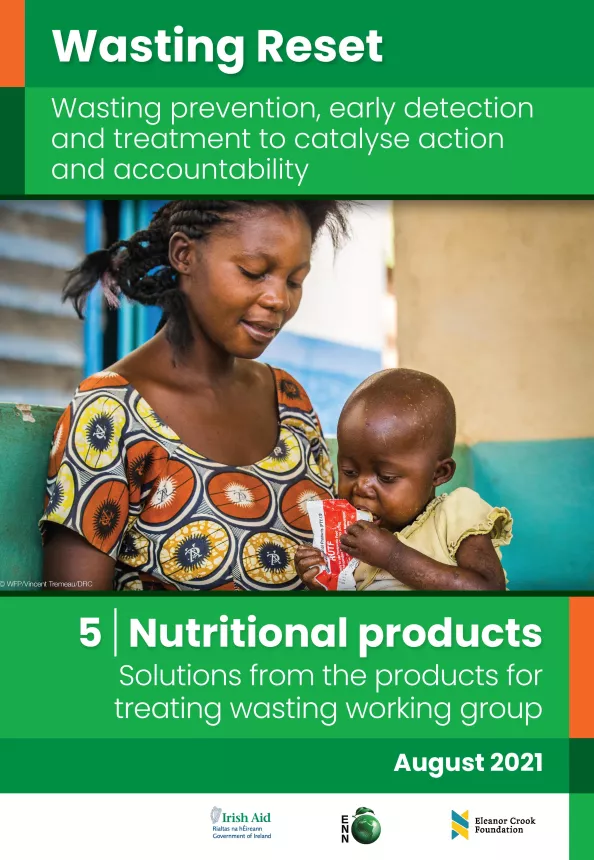‘Wasting Reset’: wasting prevention, early detection and treatment to catalyse action and accountability- Solutions from the products for treating wasting working group
Publication details
In recent years, whilst there has been an increase in interest and investment aimed at reducing wasting, including strong support from national governments, the pace of progress is much too slow to reach global goals and targets. We therefore need a ‘reset’ of childhood wasting prevention, early detection and treatment. This reset aims to galvanise multiple stakeholders around the key actions needed to stimulate progress and ensure accountability in the 2022-2030 period, and will be used by governments and organisations to inform their political and financial commitments to tackling wasting.
To provide technical recommendations on what needs to be done to significantly reduce child wasting, six independent working groups (WGs) were established. These WGs were made up of representatives of more than 40 organisations and governments, who discussed and agreed upon key messages and actions.
The key messages from this Working Group were:
- Stock medical facilities of all kinds with the supplies needed to treat - according to national priorities and protocols - children and pregnant and lactating women (PLW) affected by wasting. Improving the availability of wasting products at country level can be achieved through increased domestic resource allocation for wasting products, including key commodities in national essential medicines/commodities lists, strengthening supply chains, and increasing and improving local production capacity where it can improve product availability.
- Improve the cost-effectiveness of wasting product production and programmes through the development, scale-up and use of new, more cost-effective ready-to-use food (RUF) formulations, improving the visibility of demand for suppliers, as well as the efficiency of quality testing and price adjustment. The adoption of simplified programmes that treat wasting, with dosage tailored to risk, will also support this change.
- Strengthen the supply chain management of wasting products, particularly over the ‘last mile’, through integrating (including capacity-building actions) the procurement, distribution and general management of wasting products into national supply chain systems where appropriate, and developing mechanisms to better understand pipeline breaks and stockouts.
- Fill knowledge and guidance gaps, particularly on the effectiveness of products for PLW, and on the dietary treatment of moderate wasting.
